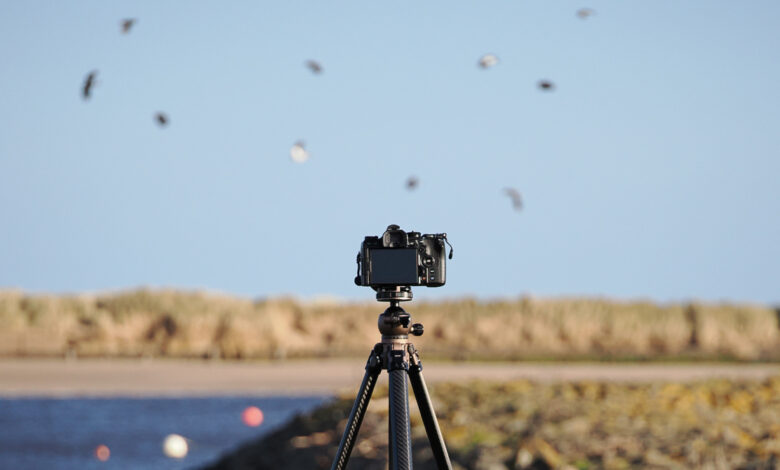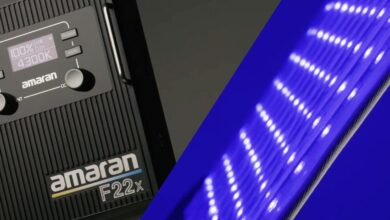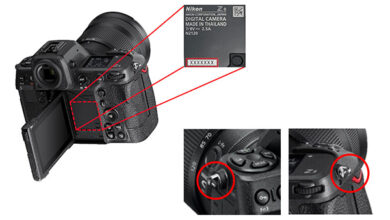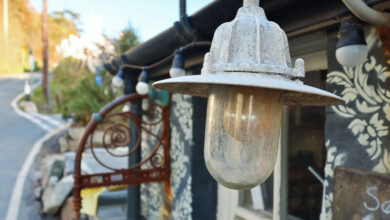Will Neewer’s Travel Tripods Put the Cat Among the Pigeons? I Think So.

If you had asked me a few years ago what I thought of Neewer gear, my reply would not have been positive. However, recently I have been testing their newest releases, and I am impressed with what I found. Here’s what I discovered about their travel tripods.
What Is a Travel Tripod?
Many readers are new to photography and don’t know anything about what particular product names mean, nor anything about the manufacturers and might wonder about the Neewer Litetrip TP35. So, as I sometimes do, I’ll begin this article with a short explanation of both. If you are a seasoned photographer and know everything there is to know about this topic, then you can skip over this and the following section.
Travel tripods are compact and lightweight. As their name suggests, they are designed for traveling. There are no strict design parameters that manufacturers must adhere to, so what one describes as a travel tripod can mean anything. Nevertheless, they are usually diminutive compared to other models.
Making tripods smaller and lighter can be achieved in three ways. One is to lose robustness and stability, and another is to use high-tech, lightweight components. The latter of those adds to the cost. The third way is to simplify the design by omitting features one might find on larger tripods. Good travel tripods are a compromise of these factors, and photographers need to decide what is most important for them.

What Is Neewer?
For the first few years, under a different name, Neewer was reselling new and refurbished name-brand cameras and other electronics primarily through eBay. Besides cameras, they sold gear such as audio and DVD players, plus GPS units. They trademarked the Neewer brand in 2011 so they could brand-mark photo and video accessories that they sold in kits.
Over time, they began hiring engineers, designers, and software developers, i.e., personnel they needed to operate as ODM instead of OEM. They say they now focus on producing technology and innovation while simultaneously making build quality paramount. That change in quality is noticeable and has made it a brand worthy of attention.
With their own facilities, they have expanded their manufacturing and engineering departments several times over. Their website says they have a mission of producing high-quality, professional products at entry-level prices. They are releasing new products every few weeks, and this appears to be the case.
That’s good news for us photographers as competition in the marketplace helps to push the price of what sometimes seems extortionately expensive gear downwards. It will no doubt rattle the cages of other manufacturers.
Neewer’s Latest Two Travel Tripods
Neewer sent me two carbon fiber travel tripods to test. The first was the Litetrip 35 and the other was the TP62 Travel Tripod. I’ll review that second one separately.
At the price point of these tripods, as one would expect, their overall quality was good.
Both were delivered in sturdy, padded woven-fabric carrying cases and came with a range of accessories. They each had Arca-style quick-release plates that, cleverly, matched the shape and features of those provided by Peak Design, making them compatible with that brand’s equipment, including the Capture Clip.
With both tripods, the center column can be shortened, and the legs are secured by levers. Both have two ¼” screw accessory ports and hooks on the center column to hang your camera bag and increase stability. However, this is where the similarities end.
A Close-Up Look at the Neewer Litetrip 35
The sleek-looking black carbon fiber legs of the Litetrip 35 have matte metallic dark bronze features that match the alloy ball head. The 5-section legs move outwards by pulling down on metal clips, and they can be adjusted beyond horizontal, which is useful on a rocky shoreline where one might rest one leg on top of a rock.

The leg sections are extended by releasing large and robust plastic flip-lock clips that are easy to operate even when wearing gloves and mittens. All the leg sections run smoothly and, when released, will open under the force of gravity but with a little resistance.

The bases of the legs have permanently attached rubber feet.
If you only want to rotate the ball head, this is achieved by loosening a panoramic lock knob, and the ball head can be turned by 360 degrees; there is a calibrated ring marked with 5-degree graduations if you want precision. That turned evenly and smoothly with just the right amount of resistance.
The ball head moves as smoothly as any I have tried, requiring just enough force for an even steady movement; nobody wants floppy ball heads, do they? The head’s tilt locking knob is well designed, as it can be repositioned after locking, so it doesn’t get in the way.
The QR plate is released using a switch that is locked by a rotary locking ring.

There’s both a long and a short center column. In normal use, I would always use the short ones as I don’t ever extend those. However, in testing, I found the longer column to be sturdy.
At the bottom of the center column is a detachable hook held in place by a 1/4” screw thread. The columns are reversible. To achieve that, you need to unscrew the hook for it to pass through the top of the tripod spider. That is a good thing as it stops the column and the attached camera from falling and hitting the ground when you release it.
Supplied with the tripod is a panoramic quick-release (QR) plate, so one can level the camera head, and then rotate it above the ball.
There’s also a phone clamp and two L-shaped hex keys.

In Use
I found the tripod was pleasingly easy to use. Being carbon fiber, it’s light enough, weighing just 2.5 lb (1.13 kg), but it’s also very sturdy even when extended to its full height. It can support up to 22 lb (nearly 10 kg), which is heavier than any of my camera/lens combinations. With the center column, it extends to 165 cm, and 132 cm without. With the ball head attached, it lowers the camera to just 19 cm and it folds away to 50 cm.
Its profile is small, making it easy to grip when carrying.
One slightly odd design decision was to place a bubble level under the QR plate. Saying that, I rarely use the bubble level on any of my tripods.
It’s steady. I used it outside in a strong wind and it stayed put.
What I Liked and What Could be Improved With the Neewer Litetrip 35
What I Liked
- Well made
- Versatile
- Compact
- Lightweight
- Sturdy
- The center column can be shortened to save weight.
- Reversible center column.
- Easy to use even when using gloves.
- Failsafe QR plate locking mechanism.
- Swiss-Arca style QR release plate.
- Peak Design Capture Clip compatible.
- Good carrying case with a small internal pocket for accessories.
- Though not a cheap tripod, it’s more affordable than others of similar quality.
- It looks sleek.

What Could Be Improved Next Time?
- The leg-release flip lock levers seem strong enough, but I wonder if they would have been better in metal rather than plastic, even if it added an ounce or two to the weight.
- The screw for the panoramic QR plate would be improved with a hex key socket.
- It would be nice to see less single-use plastic packaging.
Specifications
- Model: LT35
- Compatibility: Compatible with PD Arca
- Application: Photo/Video/Film
- Main Features: Dual Compatibility, Heavy Duty
- Mounting Point: 1/4″, 3/8″, Cold Shoe
- Material: Carbon Fiber
- Load Capacity: 22lb/10kg
- Dimensions: 6.4″- 61.4″/16.5-156cm
- Weight: 2.5lb/1.1kg
- Leg Angle Adjustment: 22°, 55°, 85°
- Folded Length: 19″/49cm
- Height Range: 18″-61″/46.5-156cm (long center column), 6.4″-52″/16.5-132cm (short center column)
Package Contents
- Tripod with Ball Head
- Phone Holder
- Short Center Column
- Panoramic Quick Release Plate
- 2x L Shaped Hex Key
- Carrying bag
In Conclusion
As I mentioned at the start, a travel tripod inevitably makes compromises. I have other tripods that are even sturdier, but they are bigger and heavier. That doesn’t mean the Litetrip 35 is in any way unsteady. Indeed, I was confident using it at its full height even with a stiff wind blowing. This Neewer tripod has succeeded in retaining stability while being well-featured, and not at all heavy.
The price for the Neewer Litetrip TP35 is good too, compared with other manufacturers’ equivalents. For those looking for a quality travel tripod, it’s a good option. However, they should also consider the Neewer TP62, which has slightly different features. My review of that will follow very shortly. Keep an eye open for it, as there are interesting differences.




